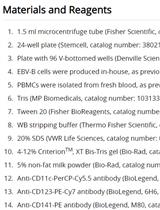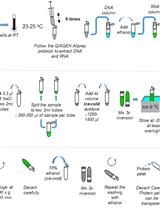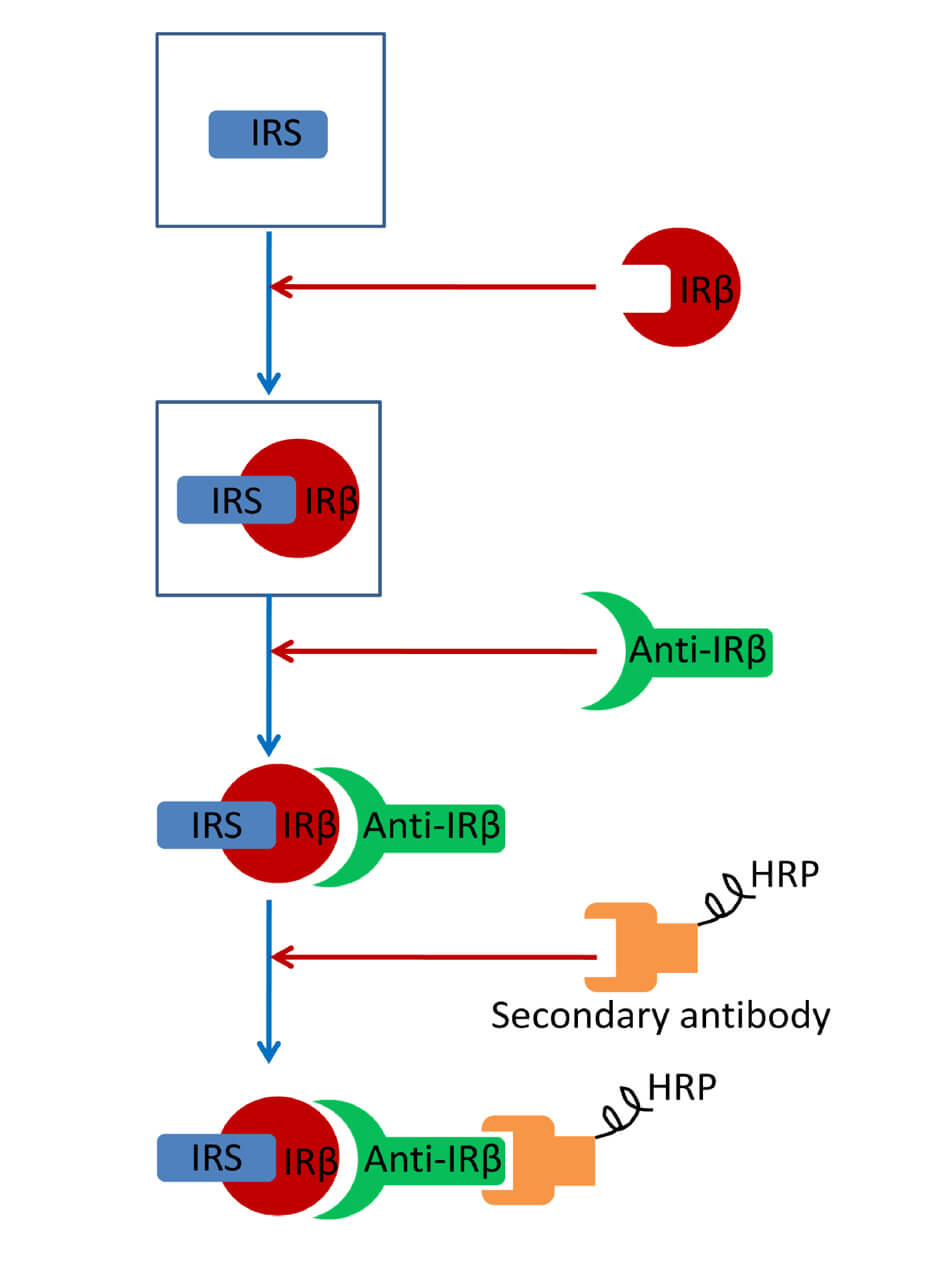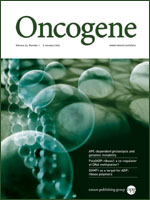- Submit a Protocol
- Receive Our Alerts
- Log in
- /
- Sign up
- My Bio Page
- Edit My Profile
- Change Password
- Log Out
- EN
- EN - English
- CN - 中文
- Protocols
- Articles and Issues
- For Authors
- About
- Become a Reviewer
- EN - English
- CN - 中文
- Home
- Protocols
- Articles and Issues
- For Authors
- About
- Become a Reviewer
Isolation of Epithelial Cells from Mouse Gastrointestinal Tract for Western Blot or RNA Analysis
Published: Vol 2, Iss 22, Nov 20, 2012 DOI: 10.21769/BioProtoc.292 Views: 22197

Protocol Collections
Comprehensive collections of detailed, peer-reviewed protocols focusing on specific topics
Related protocols

Measurement of CD74 N-terminal Fragment Accumulation in Cells Treated with SPPL2a Inhibitor
Rubén Martínez-Barricarte [...] Jean-Laurent Casanova
Jun 5, 2019 6958 Views

Capillary Nano-immunoassay for Quantification of Proteins from CD138-purified Myeloma Cells
Irena Misiewicz-Krzeminska [...] Norma C. Gutiérrez
Jun 20, 2019 6809 Views

Far-western Blotting Detection of the Binding of Insulin Receptor Substrate to the Insulin Receptor
Jinghua Peng [...] Ling He
Feb 20, 2023 2431 Views
Abstract
The gastrointestinal (GI) tract is lined by a single layer of epithelial cells which function in secretion, absorption, and digestion. In addition, most GI tract tumors develop from epithelial cells (carcinomas). This protocol describes isolation of the surface epithelium from the underlying stroma, muscular layer and submucosa in the GI tract. In this protocol, epithelial cell adhesions are weekend by chelating Ca +2 ions followed by mechanical separation of the cells by vortexing. Analysis of protein levels and gene expression patterns in isolated epithelial cells versus whole GI tissue minimizes the potential for confounding contributions from contaminating stromal cells.
Keywords: Intestine tissueMaterials and Reagents
- 4% sodium hypochlorite (Sigma-Aldrich, catalog number: 239305 )
- Phosphate buffered saline (PBS) (Mediatech, Cellgro®, catalog number: 21-031 )
- KCl
- NaCl
- KH2PO4
- Na2HPO4
- EDTA
- DTT
- Aprotinin (USB, catalog number: 9087-70-1 )
- Leupeptin (MP, catalog number: 195623 )
- Pepstatin (MP, catalog number: 195368 )
- PMSF (Sigma-Aldrich, catalog number: 329-98-5 )
- Ethanol
- 0.04% sodium hypochlorite (see Recipes)
- 100x protease inhibitor (store at -20 °C) (see Recipes)
- Solution B (see Recipes)
- 1x lysis buffer (see Recipes)
Equipment
- CO2 chamber for mice
- Dissecting scissors (one medium size and one small size for dissecting mice)
- Forceps (2)
- 15-ml conical tubes
- 1.5-ml eppendorf tubes
- 3ml Insulin syringe
- Vortex
- Centrifuge compatible with 15-ml conical
Procedure
- Make sure to prepare all the solutions including PBS at least 1 h before the start of killing the mice and store them on ice so they are cold when you start to work with them.
- Sacrifice the mouse (18-25 grams) by CO2 asphyxiation according to American Veterinary Medical Association (AVMA) guidelines on Euthanasia, 2007 (https://www.avma.org/KB/Policies/Documents/euthanasia.pdf). Briefly, first carbon dioxide’s anesthetic properties are used by exposing rodents to a slowly rising concentration of carbon dioxide until they become unconscious. A chamber fill rate of 20%, or 1/5 th of the cage volume per minute is recommended. Slower, uncoordinated movements occur after about 1 min, animals stop moving after about 2 min, and unconsciousness occurs after about 2.5 min. After unconsciousness is achieved, flow can be increased to hasten death. Two-step euthanasia is used to ensure death. Once the animal has lost consciousness and is unresponsive to a toe pinch, a follow-up method is utilized. This can include decapitation with sharp scissors, cervical dislocation, or thoracotomy.
- Open the abdomen and dissect the gastrointestinal tract from the stomach to anus by pulling gently on the stomach and removal of the mesentry (the peritoneal folding around the intestine which connects the intestinal tract to the dorsal abdominal wall. It contains fat, blood vessels and lymph nodes).
- Cut the intestine into pieces of interest (Jejunum, Ileum and large intestine).
- Keep the pieces in cold PBS on ice and work with them one at a time.
- Flush the content of the intestine with cold PBS to a 3 m clean it using l insulin syringe. Alternatively, invert the intestine on a glass rod and swirl in cold PBS
- Wash intestinal pieces in cold PBS and keep them until you are done with all pieces (to synchronize your work).
- Incubate pieces in 50- 100 ml of 0.04% sodium hypochlorite on ice for 15 min (this works well using a small beaker). This step removes bacterial contaminants.
- During this time prepare three 15-ml conical tubes for every tissue piece and put 5-10 ml of solution B in each tube (if you are using glass rods. 10 ml will be necessary). Mark the tubes and leave them on ice.
- Remove intestinal pieces from the sodium hypochlorite and rinse in PBS.
- Put the intestinal pieces in the 15 ml conical containing solution B for 15 min on ice.
- Remove solution B and add 5 ml PBS (or solution B). I do this by holding the intestinal piece with a long forceps, decanting the solution B then adding back the intestinal piece and add PBS.
- Vortex for 15 sec.
- Take the intestinal pieces and put them in another 15 ml conical with solution B.
- Repeat steps 11-14 twice (you will have 3 tubes per piece).
- Suspend the cells from all tubes for every piece and mix them in one tube.
- Centrifuge at 1,000 rpm (1,000 x g, 10 min at 4 °C).
- Take the fluid off and suspend the cells in lysis buffer (5 ml for Jejunum and Ileum or 1 ml for colon) for total cell lysate or Trizol (Invitrogen) 1 ml for RNA extraction.
Recipes
- 0.04% sodium hypochlorite
1 ml 4% sodium hypochlorite
99 ml PBS
- Solution B
2.7 mM KCl 0.2 g or 2.7 ml 1 M KCl
150 mM NaCl 8.77 g 50 ml 3 M NaCl solution
1.2 mM KH2PO4 0.16 g
680 mM Na2HPO4 9.65 g
1.5 mM EDTA 0.44 g 3 ml 0.5 M EDTA solution
0.5 mM DTT 0.08 g 1 ml 0.5M DTT (add fresh)
Bring to 1 L in ddH2O
- 100x protease inhibitor (store at -20 °C)
10 mg aprotinin
10 mg leupeptin
10 mg pepstatin
174.2 mg PMSF
Bring to 10 ml in absolute ethanol
Vortex well before using
- 1x lysis buffer
5x reporter lysis buffer 2 ml
ddH2O 7.9 ml
100x protease inhibitor 100 μl
Acknowledgments
This protocol was modified from a crypt isolation procedure reported by Kulkarni and Yielding (1985). This work was supported by RO1 CA10922 from the National Cancer Institute and P20s RR15563 and RR016475.
References
- Kulkarni, M. S. and Yielding, K. L. (1985). DNA damage and repair in epithelial (mucous) cells and crypt cells from isolated colon. Chem Biol Interact 52(3): 311-318.
- Zeineldin, M., Cunningham, J., McGuinness, W., Alltizer, P., Cowley, B., Blanchat, B., Xu, W., Pinson, D. and Neufeld, K. L. (2012). A knock-in mouse model reveals roles for nuclear Apc in cell proliferation, Wnt signal inhibition and tumor suppression. Oncogene 31(19): 2423-2437.
Article Information
Copyright
© 2012 The Authors; exclusive licensee Bio-protocol LLC.
How to cite
Zeineldin, M. and Neufeld, K. (2012). Isolation of Epithelial Cells from Mouse Gastrointestinal Tract for Western Blot or RNA Analysis. Bio-protocol 2(22): e292. DOI: 10.21769/BioProtoc.292.
Category
Molecular Biology > RNA > Transcription
Biochemistry > Protein > Immunodetection > Western blot
Do you have any questions about this protocol?
Post your question to gather feedback from the community. We will also invite the authors of this article to respond.
Share
Bluesky
X
Copy link








